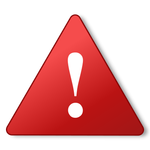Speech retardation in children
Parents usually fall easily in the comparison. When we see a child who at the age of 2 builds sentences perfectly and ours does not, we worry, as is logical.
But we must know that each child has its own rhythm, its character, its genetic inheritance and a greater or lesser degree of stimulation to start talking. However, we should not take it lightly either because a speech delay in the child can be corrected to avoid some major disorder. So, the sooner we detect it, the better.

image
The simple delay of speech is a gap in the appearance of speech and in the development of the expression with respect to the chronological age of the child. It is a development of slow language that does not correspond to your age, but when can you say that there is a late start of speech?
It can be said that the child is slow to start talking when at 2 years and more or less a month 1) does not have more than 50 intelligible words or 2) does not produce two-word utterances.

image
Let's see what signals we must take into account to identify a delay in speech
It has an alteration in the organization of the language. That is, they are able to pronounce isolated sounds and groups of sounds, but they have difficulties forming words with them there may be a delay in the acquisition of the symbolic game they are children who do not present other obvious alterations (intellectual, relationships, motor skills) and their level of understanding is normal. Minimize the use of propositions, of links and use many phonological simplifications mimics but does not pronounce phrases spontaneously.

image
When the child is 3 years old, he shows signs of a specific severe language delay and when he speaks his first words at 3 or 4 years old, he speaks of dysphasia, a disorder that prevents the normal development of expression and comprehension. of concepts.
In any case, if you suspect that your child takes longer to speak more than other children of your age or shows any of these signs, it is important to consult a speech therapist or therapist who will assess the problem.
Around 14% of children show a late onset in the acquisition of the first words, although later more than half of them will make normal use of language.
CAN ALARM SIGNALS BE GIVEN DURING THE FIRST YEAR AND A HALF?
The answer is yes. As we say, a child does not start talking suddenly one day, but there is a whole process going on from the moment of birth. Some of the warning signs that may occur during the first year and a half are the following:
- That is not receptive to the sounds around him.
- Do not look into the eyes of people around you.
- That he does not smile at others.
- That the typical babbling of small children does not begin.
- Do not point to ask for something or look where they point.
- That around 18 months no word has appeared.

image
WHAT ARE THE PROBLEMS THAT MAY APPEAR?
In the first place, it is important to highlight the differences between speech, language, and communication. Speech refers to the production of the sounds that make up the words. Some of the most typical Speech Disorders are:
- The diglossia: Difficulty in speech caused by alterations of the peripheral organs of speech (mouth, tongue, nose, etc).
- The Dysarthria: Difficulty in speech caused by alterations of the nervous system.
- The Dysphonia: Alteration of the qualities of the voice (intensity, tone, and timbre).
- The Dislalia: Inability to articulate certain sounds.
- Stuttering: It is characterized by involuntary interruptions in the flow of speech.
On the other hand, Language Disorders are alterations in the comprehension or use of spoken and/or written the language.
The most frequent difficulties have to do with language delays, which consist in a delayed appearance of the language, but which are understood as a transitory difficulty.
In a Simple Delay, the first words appear around 18 or 20 months, but neither comprehension nor communication is affected. In addition, these children respond positively to the intervention and are often ready for school demands.
In Language Delay, the first words take longer to appear. In addition, there are usually also difficulties in speech and understanding may also be affected. Although, as in the Simple Delay, they respond well to the intervention, they may take a little longer to reach normal language development levels for their age, being equal to the other boys and girls around five years of age.

image
So, when should we worry?
Most children develop language at approximately the same age and going through the same stages, which seems to be associated with the biological process of brain maturation. Brain maturation, brain growth, is determined genetically and favored (or not) by the environment in which the child develops, so each child will have their own rhythm.
That said, there will be some ages from which, if a certain skill has not been acquired, it is more likely (but not certain) that we are facing a problem. We must act when a child exceeds these ages without acquiring the expected ability:
8 months: does not babble
16 months: does not say any word
16 months: does not point or gesture
24 months: there are no simple phrases
24 months: always repeating the same, even in the inappropriate context
At any age: language development is interrupted and does not progress
At any age: the child stops doing or saying things that he already knew
If this happens, the sensible thing to do is to consult a professional to guide us and help detect any possible problem. Wait and believe that everything will be solved only is not appropriate, if it passes the critical period to acquire the language, then it will be much more difficult to appear.

Reference
https://www.bebesymas.com/desarrollo/retraso-del-habla-en-los-ninos
https://www.bekiapadres.com/articulos/detectar-problemas-habla-hijos/
https://neuropediatra.org/2017/02/10/retraso-del-lenguaje-habla/